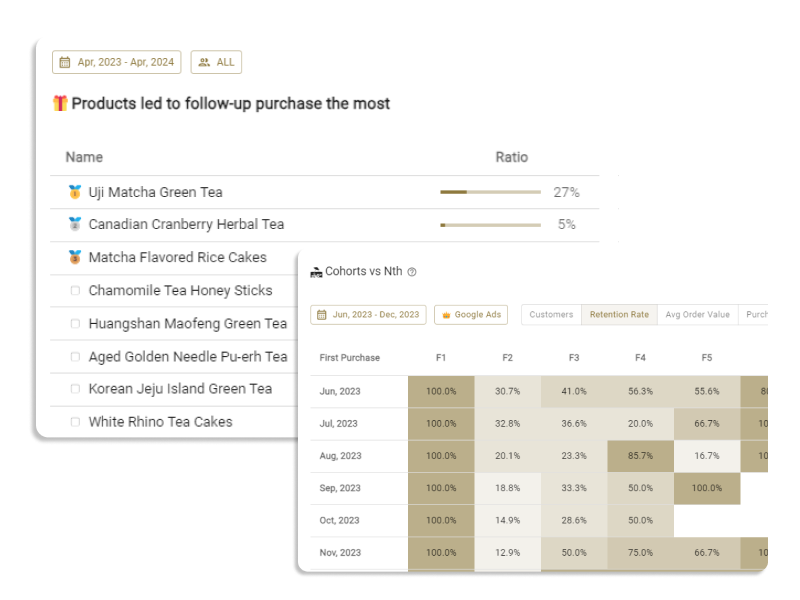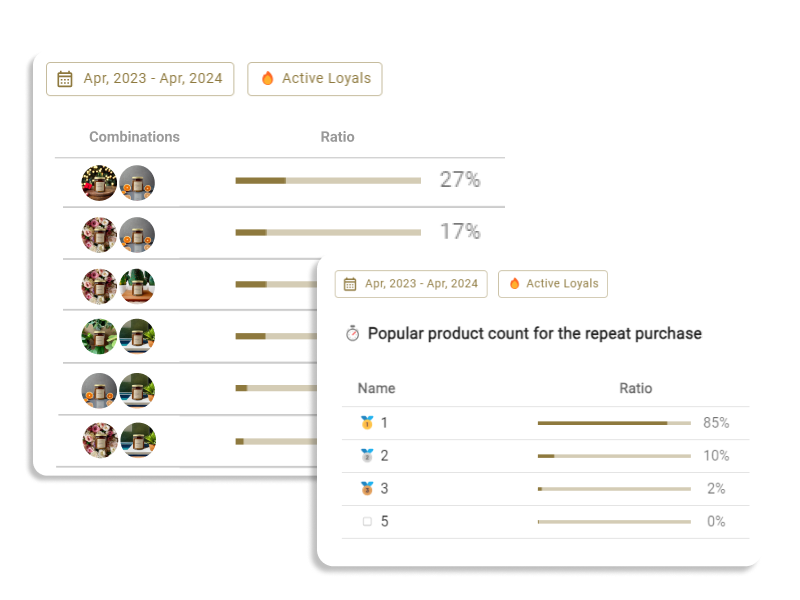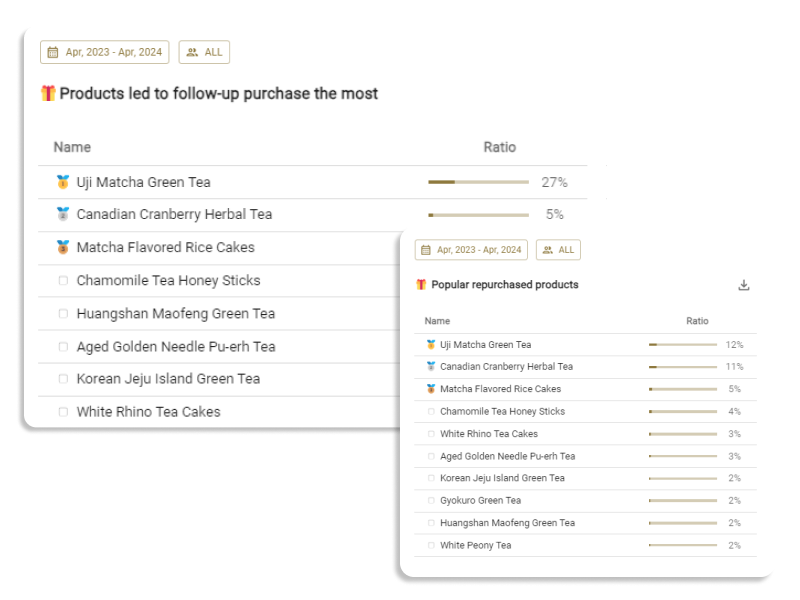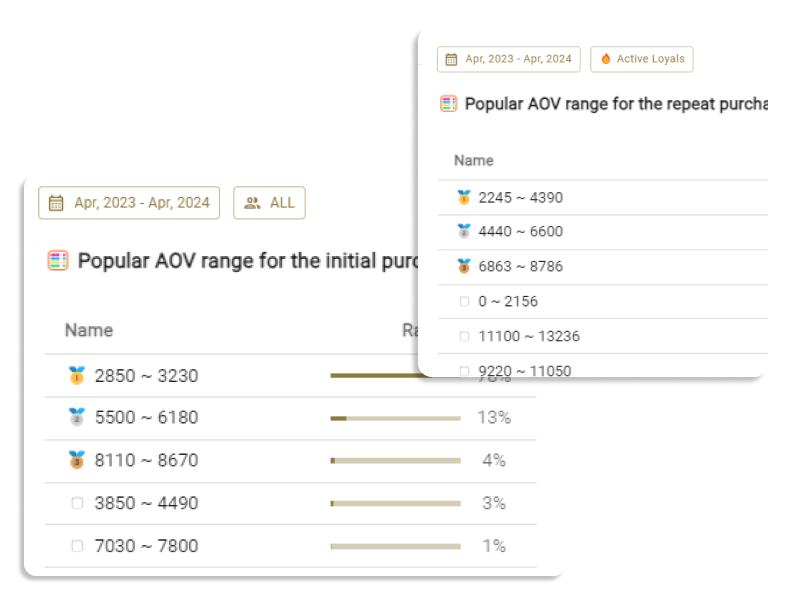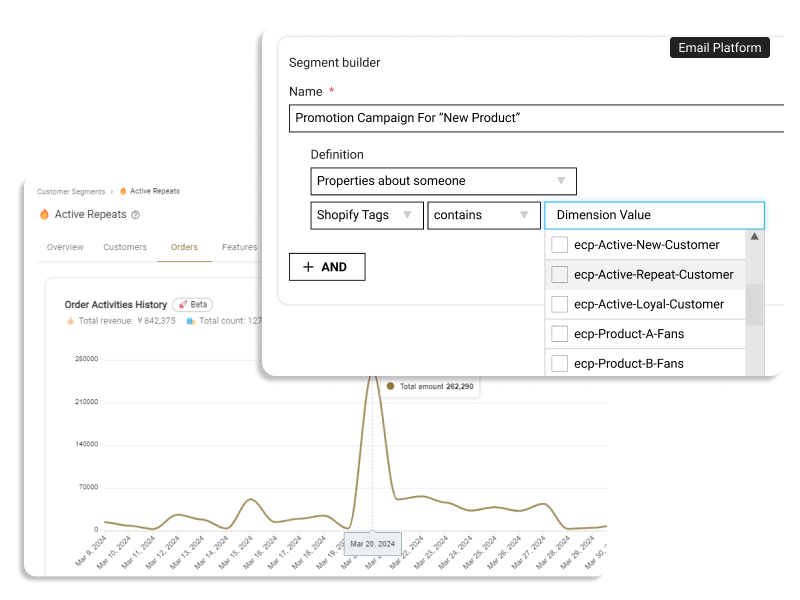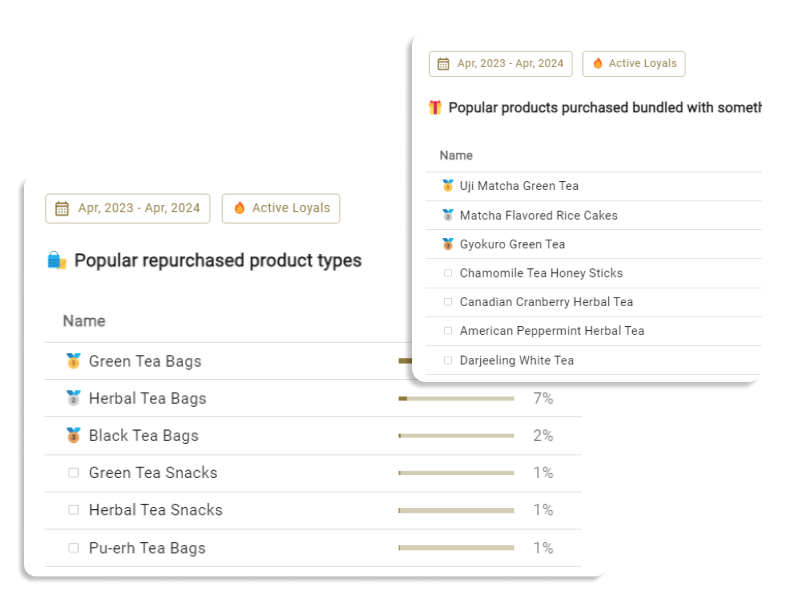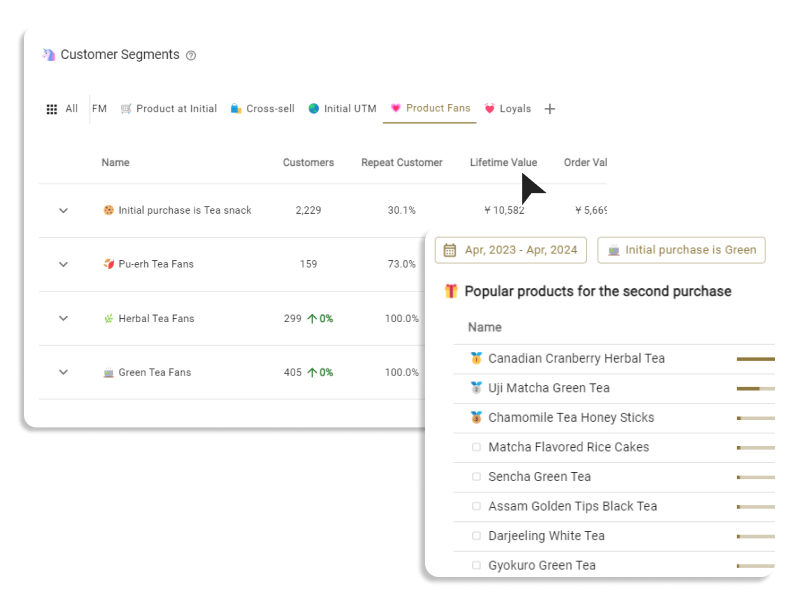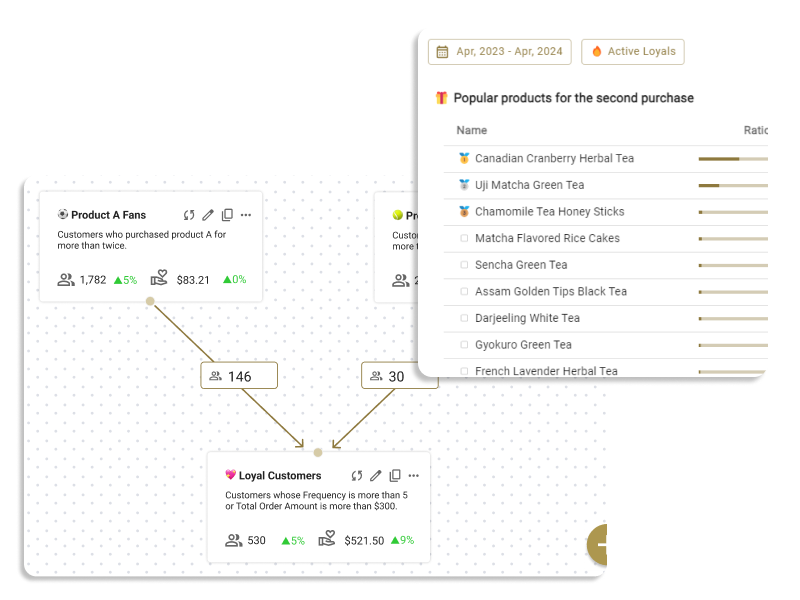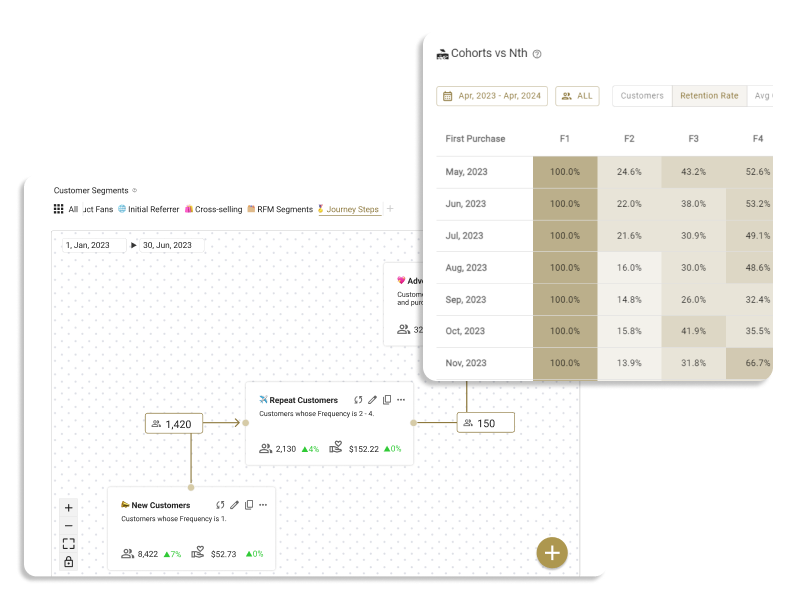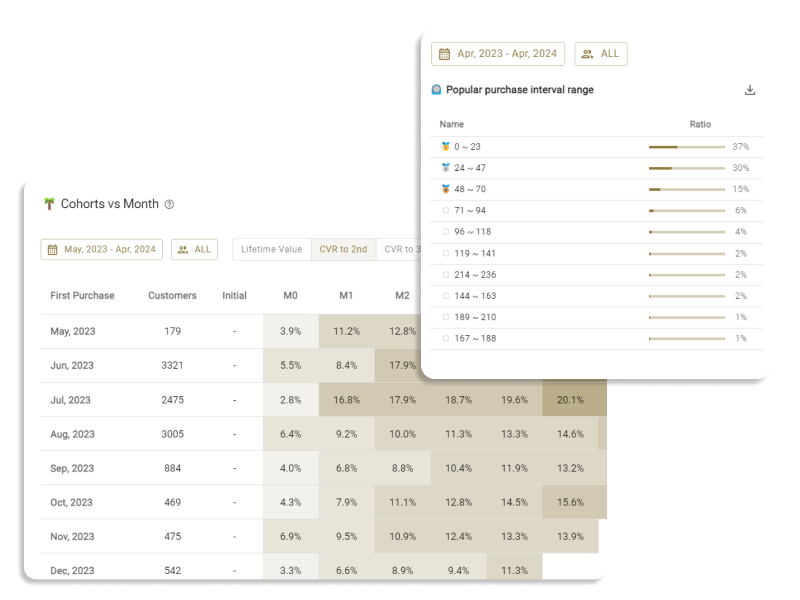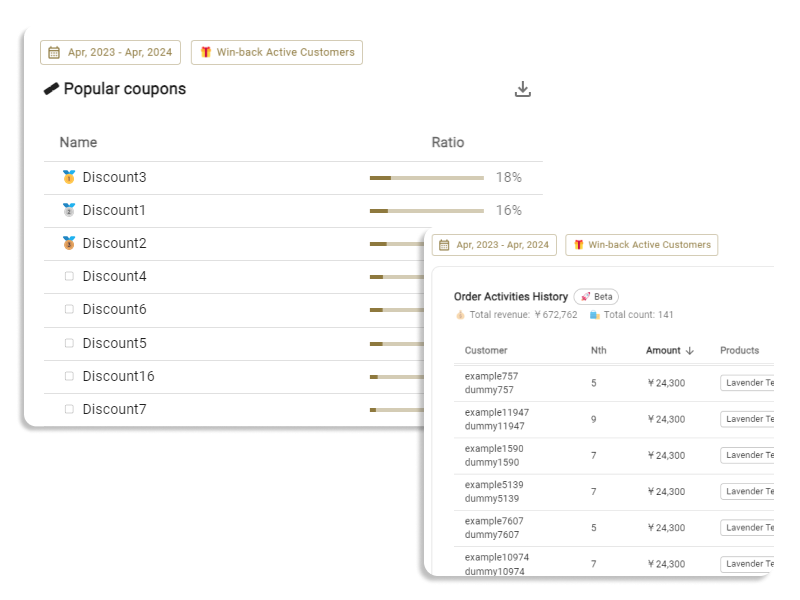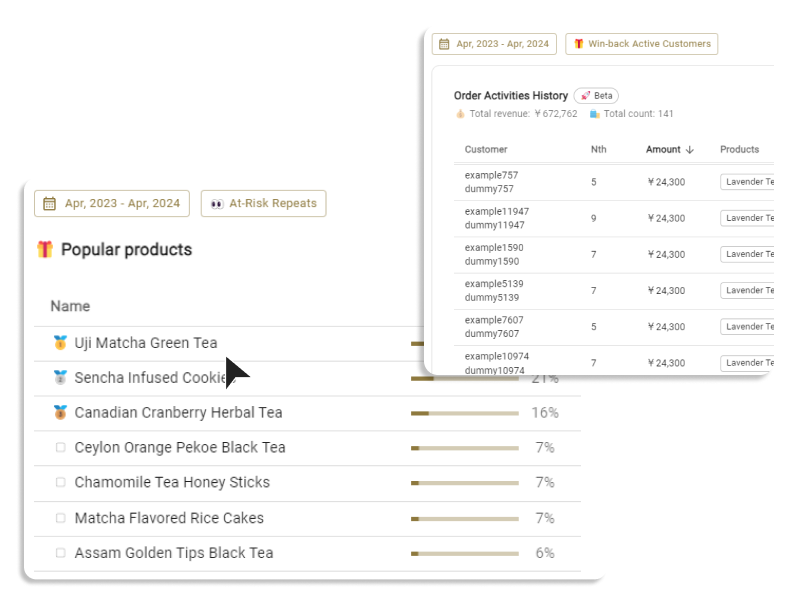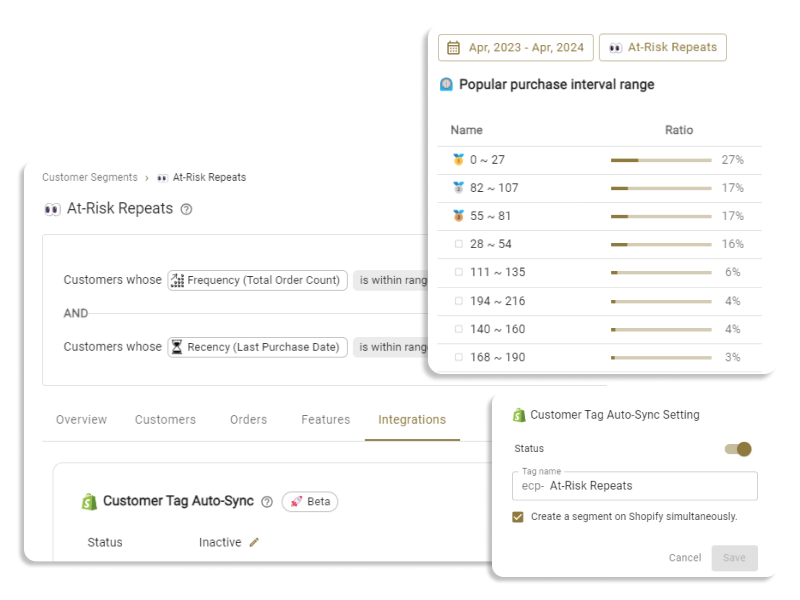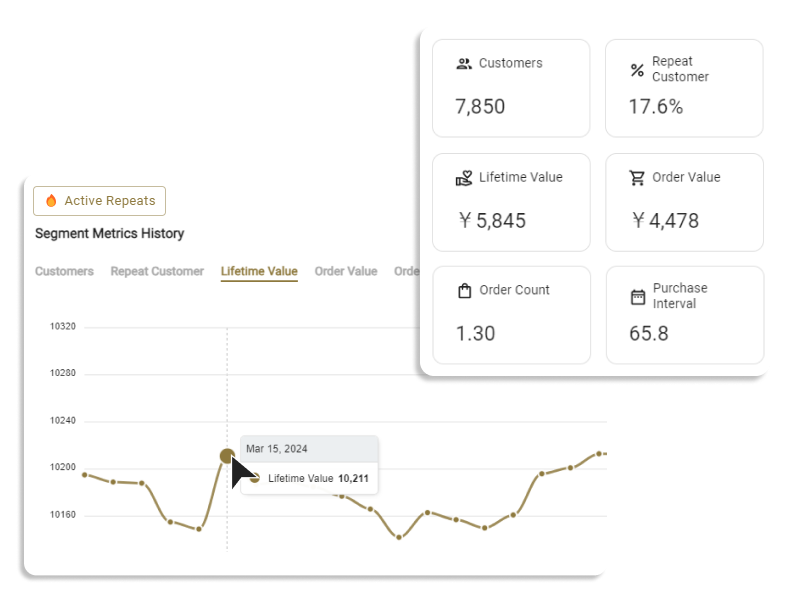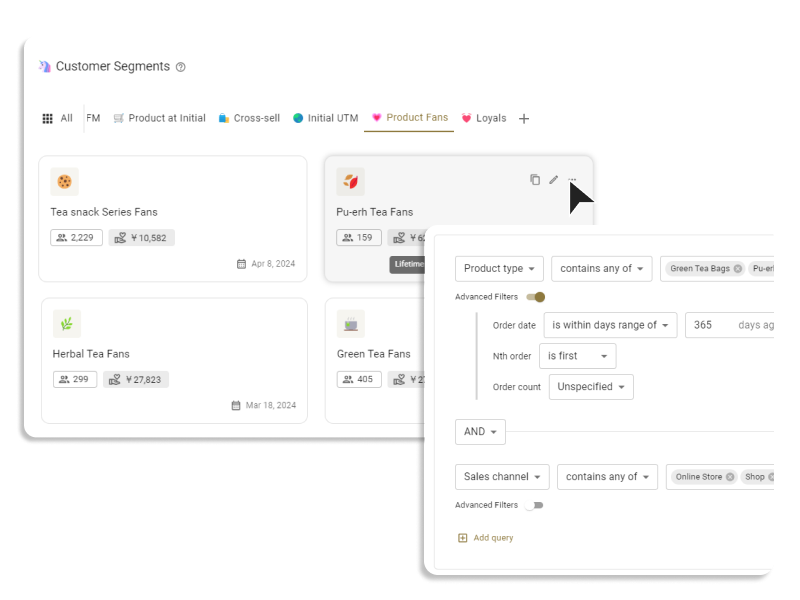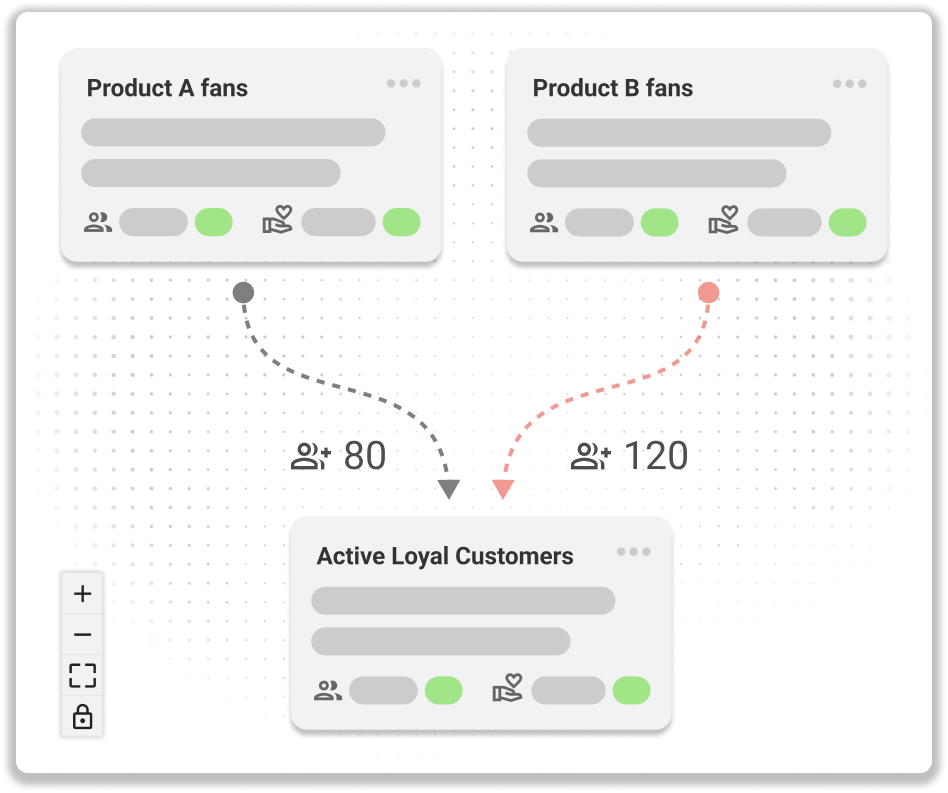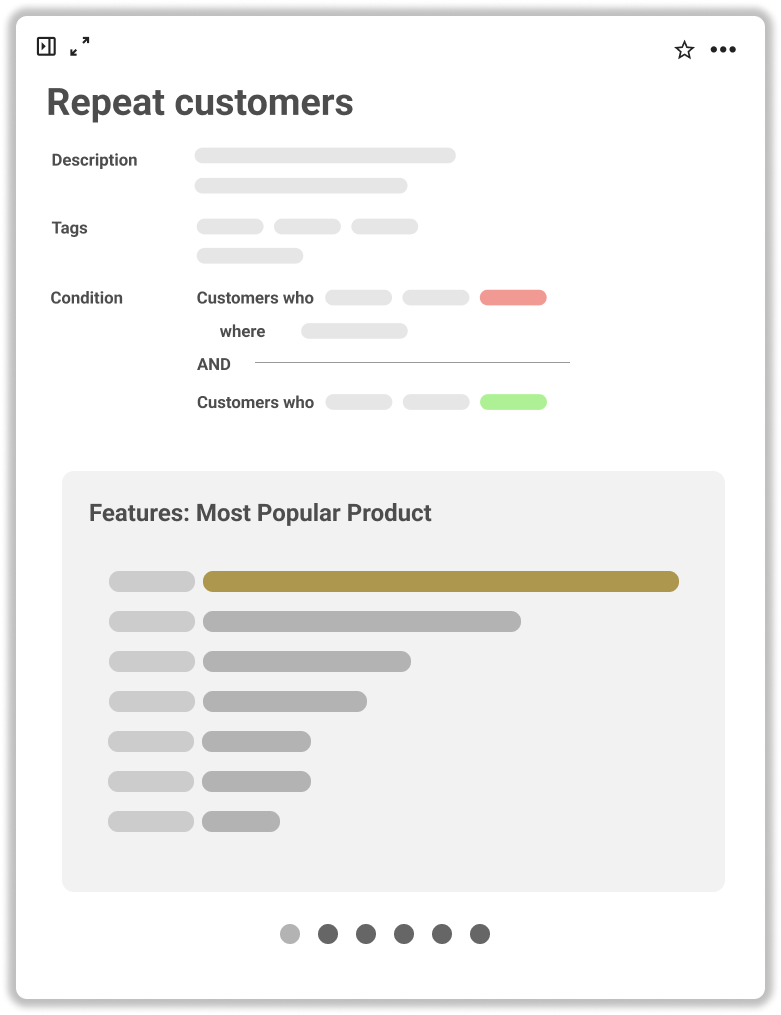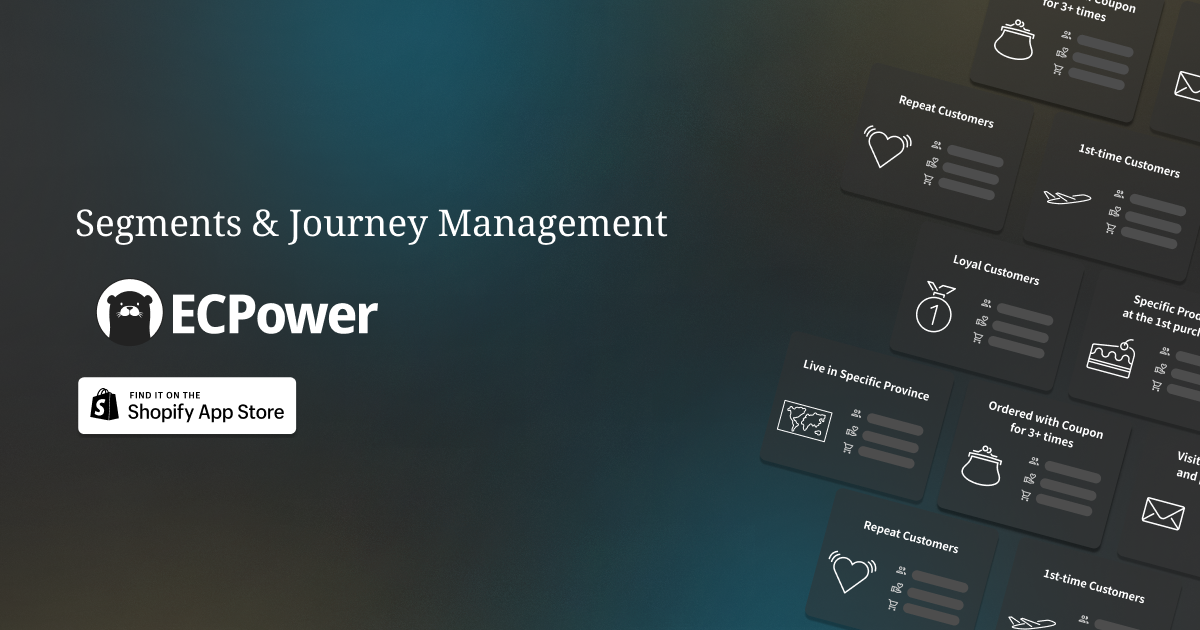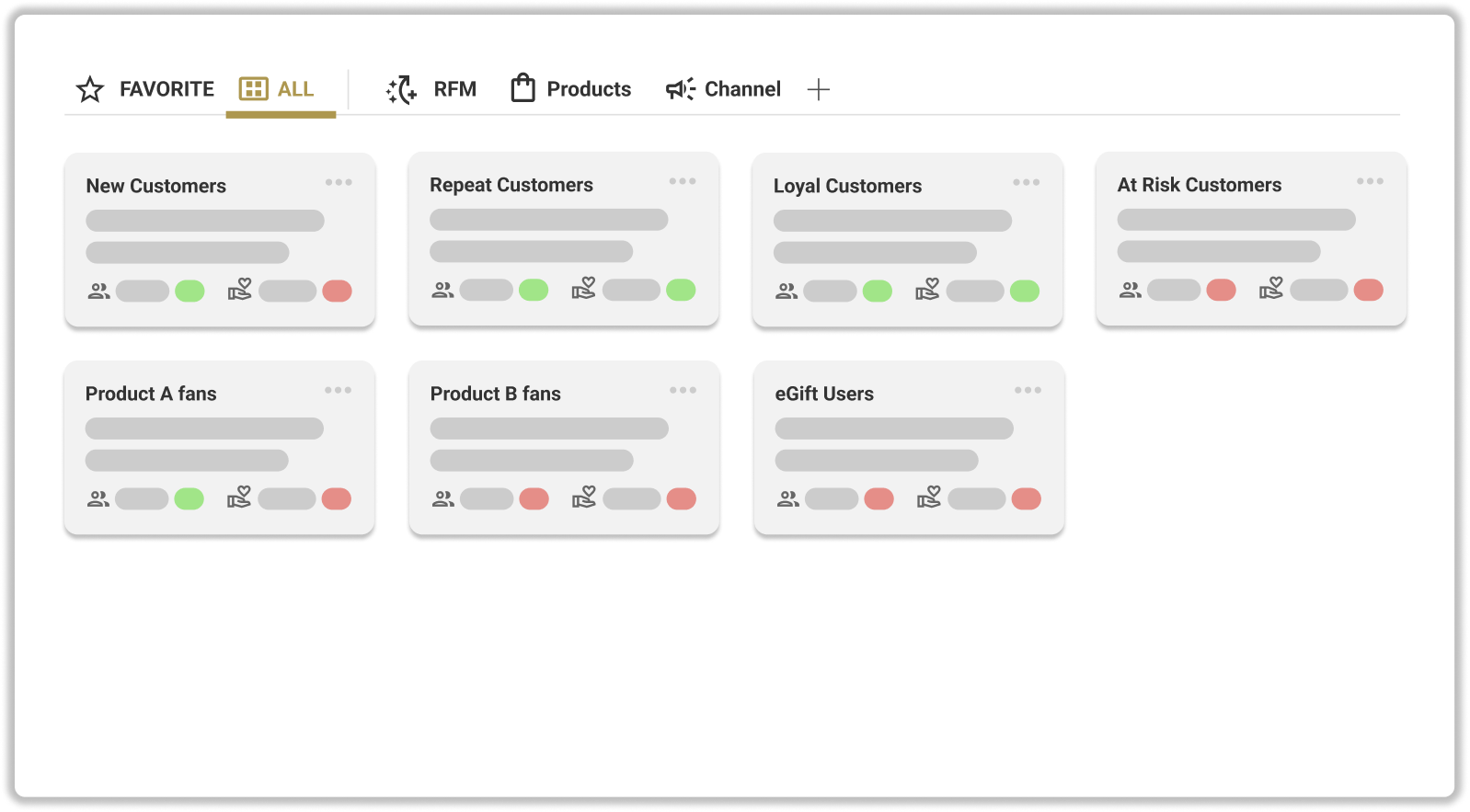For businesses operating on Shopify, understanding and optimizing revenue from various customer segments is a cornerstone for strategic decision-making and marketing effectiveness. This section breaks down the concept of revenue from segments, its importance, and how you can effectively track it over time.
Metric Definition
Definition: the daily aggregation of sales from customers belonging to a segment at the latest data refresh.

Tracking this metric can be complex due to the dynamic nature of customer segments; membership can change daily based on the criteria set for the segment.
The metric is broken down into three key areas:
- A: Revenue from customers newly added to the segment: This includes sales from customers who have just entered the segment criteria with their latest order.
- B: Revenue from customers within the segment: This accounts for sales from customers who are already part of the segment and make additional purchases that still fit within the segment's order count criteria.
- C: Revenue from customers leaving the segment: This captures sales from customers whose latest purchase moves them out of the segment's criteria.
For example, managing a segment of repeat customers with an order count of 2 to 4:
- A customer's second order places them into category A.
- Orders three and four from customers already in the segment fall into category B.
- A fifth order, moving a customer out of the segment's criteria, is classified under category C.
What's Revenue from Segment and Why It Matters
Revenue from Segment refers to the daily aggregation of sales from customers belonging to a segment at the latest data refresh. This metric is critical for assessing the performance of targeted marketing strategies. By understanding the revenue generated from a specific segment, businesses can fine-tune their marketing efforts, focusing on the most profitable or promising segments.
Moreover, tracking the revenue from targeted customer segments on a monthly or fiscal period basis is essential for gaining insights into business performance and making informed decisions.
How to Track Revenue from Segment Over Time
Tracking segment revenue over time poses significant challenges, primarily because customer segments are dynamic. Tools like email marketing platforms and even Shopify's admin panel typically do not offer functionality to track the revenue transition of segments. This is where ECPower steps in as a solution.
The difficulty in tracking or aggregating revenue by segment stems from the need to retrospectively determine whether a customer belonged to a specific segment at the time of their order. Performing this analysis for every customer and order, after the fact, is incredibly challenging.
ECPower offers the capability to automatically track the revenue from your customer segment after it's created, providing a streamlined and efficient way to monitor and analyze the economic impact of your targeted segments.
Delve into Revenue History
From the moment you create a segment, ECPower provides the capability to visually track its revenue history through graphical representations. This feature allows for an intuitive understanding of how the segment has evolved over time.
Should you wish to delve into the segment's metrics prior to its creation, a specialized process is available to reproduce this historical data. For detailed instructions on accessing these retrospective insights, please consult the following guide:


